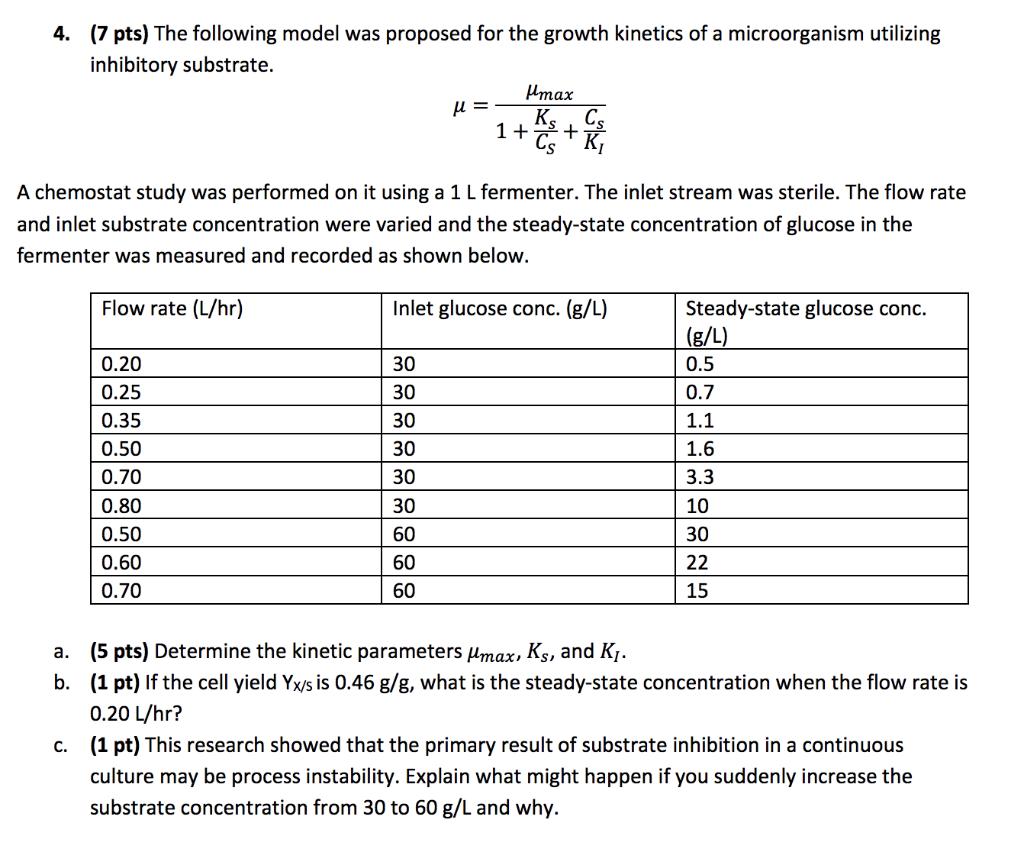Answered step by step
Verified Expert Solution
Question
1 Approved Answer
4. (7 pts) The following model was proposed for the growth kinetics of a microorganism utilizing inhibitory substrate. a. b. C. 0.20 0.25 0.35

4. (7 pts) The following model was proposed for the growth kinetics of a microorganism utilizing inhibitory substrate. a. b. C. 0.20 0.25 0.35 0.50 0.70 0.80 0.50 0.60 0.70 = A chemostat study was performed on it using a 1 L fermenter. The inlet stream was sterile. The flow rate and inlet substrate concentration were varied and the steady-state concentration of glucose in the fermenter was measured and recorded as shown below. Flow rate (L/hr) "max 30 30 30 30 30 30 60 60 60 1+ Ks, Cs Cs +K Inlet glucose conc. (g/L) Steady-state glucose conc. (g/L) 0.5 0.7 1.1 1.6 3.3 10 30 22 15 (5 pts) Determine the kinetic parameters max, Ks, and K. (1 pt) If the cell yield Yx/s is 0.46 g/g, what is the steady-state concentration when the flow rate is 0.20 L/hr? (1 pt) This research showed that the primary result of substrate inhibition in a continuous culture may be process instability. Explain what might happen if you suddenly increase the substrate concentration from 30 to 60 g/L and why.
Step by Step Solution
★★★★★
3.42 Rating (158 Votes )
There are 3 Steps involved in it
Step: 1
a 5 pts Determine the kinetic parameters max Ks and Kj The kinetic parameters max Ks and Kj can be determined using the chemostat experiment results m...
Get Instant Access to Expert-Tailored Solutions
See step-by-step solutions with expert insights and AI powered tools for academic success
Step: 2

Step: 3

Ace Your Homework with AI
Get the answers you need in no time with our AI-driven, step-by-step assistance
Get Started


